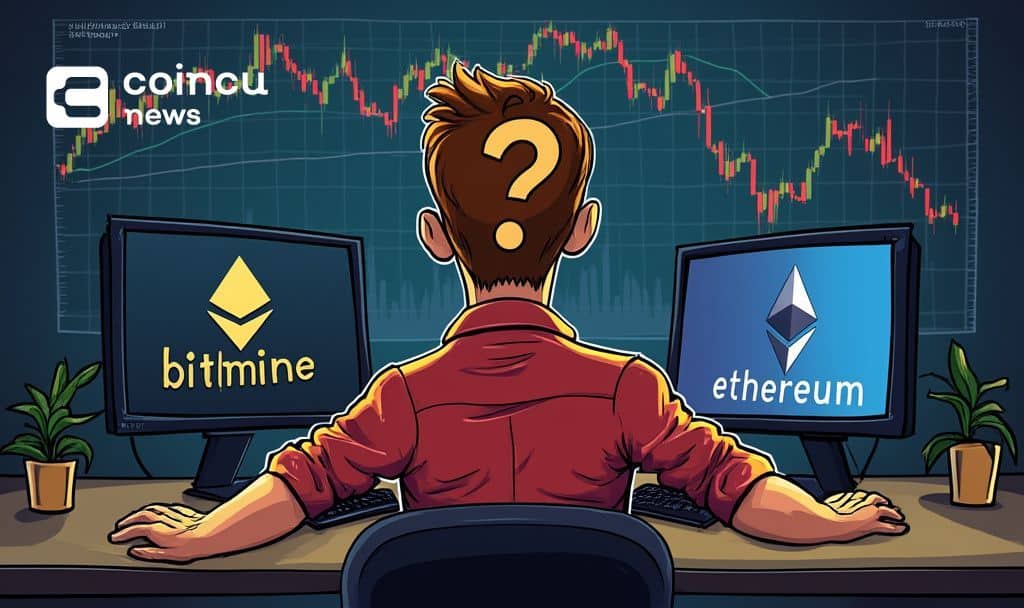What If Satoshi Came Back Tomorrow? Three Possible Outcomes

In April 2011, Bitcoin (BTC) developer Mike Hearn got an email from Satoshi Nakamoto, the last one known. In it, Satoshi said he had “moved on to other things.” And that was it. No goodbye, no big farewell speech. Just silence after that. More than a decade has now passed.
Who was this person, really? No one knows. No name, no face, nothing. It’s wild when you think about it, the creator of the world’s first decentralized currency just disappeared. Some say he vanished on purpose. Maybe he wanted Bitcoin to survive without him. Perhaps that was the final lesson: true decentralization means no leader.
Over time, his silence became part of the myth. People started treating Satoshi Nakamoto like a ghost story, half real, half legend. But it worked. Without a central figure, Bitcoin grew stronger, run by code and community instead of authority. It’s market capitalization has moved into the trillions, with much more likely to come.
Still, the question never dies. What if Satoshi came back tomorrow? What if he just logged in again? Imagine a post on Bitcointalk from his old account. Or worse, what if he moved even one coin from those early wallets? The internet would go crazy.
Would Bitcoin crash? Would governments panic? Would the crypto world finally get the answers it’s been chasing for over a decade? Hard to say. But one thing’s clear — that moment would change everything.
So, what would actually happen if Satoshi returned? Chaos? A philosophical crisis? Or maybe, just maybe, something entirely unexpected. In this article, we’ll explore three wild possibilities.
Three Possible Outcomes If Satoshi Came Back Tomorrow
Three futures could unfold if Satoshi returned. One is Market Shock, a storm that could shake global markets. Another is Decentralization Broken, where Bitcoin’s idea of independence begins to fracture. The last is Altcoins Rising, a power shift that could redefine the crypto landscape.
Buckle up as we explore what each could mean!
Market Shock
What if Satoshi Nakamoto just appeared tomorrow? Seriously, imagine it. The creator of Bitcoin, the legendary ghost, is suddenly online. Tweets would explode. News outlets would scramble. Reddit and Discord would light up like fireworks. People would stop what they’re doing just to watch.
What about Bitcoin’s price? Expect wild swings. Forget slight jitters, chaos is the only word that fits.
Why the panic? It’s simple. Satoshi is believed to control about one million bitcoins. That’s tens of billions of dollars. One coin moving could spark speculation. Ten coins? People would lose their minds. Exchanges might struggle to cope with the volume. Stablecoins would spike as nervous holders scramble for safety. Some might sell immediately, others would freeze, unsure what’s real.
Not everyone would panic, though. Some might actually breathe a little easier. After all, who understands Bitcoin better than Satoshi? If he said, “Relax, I’m not moving my coins,” markets could calm — slowly, cautiously. But even reassurance wouldn’t erase the shock. Traders, holders, and casual watchers would all remember this moment for months.
And then there’s the symbolism. Bitcoin isn’t just code or charts. It’s a belief. If Satoshi moved even a fraction of his coins, people would read into it endlessly. Is he sending a message? A warning? A test? Analysts would treat every transaction like prophecy. Silence suddenly becomes power.
Now imagine extremes. Maybe Satoshi Nakamoto burns part of his holdings to prove detachment. He may donate the money to charity, showing BTC can serve a purpose beyond wealth. Fear could flip into awe, and the price of BTC could skyrocket as one of its greatest supply overhangs disappears. Will it cause the price of Bitcoin to soar to a million dollars? Evidently, Confidence might return, but in a new, almost spiritual way.
Authorities would react immediately. Central banks might hold emergency meetings. Blockchain analytics firms would scramble to trace every coin. The media would follow obsessively, each headline feeding speculation. The world would watch Bitcoin not just as an asset, but as a living story.
Even after prices stabilize, the memory will stay. Bitcoin is more than algorithms or charts. It’s faith — faith that the system survives, even if its creator walks back in.
Decentralization Broken
Bitcoin was born from one bold idea: money without a leader. No central banks. No CEOs. Just code and community. When Satoshi disappeared, that idea was tested in real life. The project became an experiment in collective control. Decisions were made by consensus, not authority. His absence proved decentralization could work.
But imagine if he suddenly came back. The myth that defined Bitcoin would start to shift. The code wouldn’t change immediately, but people’s perception would. People would seek his opinion, his validation. Would developers wait for guidance before proposing updates? Possibly. Every debate about the future might suddenly be framed as: “What would Satoshi want?” The very notion of a leaderless system could feel threatened.
It’s not just philosophy. His return would raise practical dilemmas. Governments would notice. Who is he really? Where is he? Does he owe taxes on his BTC? Could regulators summon him to testify about the network’s origin or global financial use? Even privacy advocates might worry. Would his presence set a precedent for accountability that chills innovation?
Then there’s the social ripple. Media attention would turn him into a human symbol of Bitcoin. Suddenly, a network once defined by neutrality would have a face. Communities might split. Some could treat him as a visionary guide. Others might feel betrayed, thinking the silent order — the beauty of self-governance — has been broken. Debate forums could become divided between reverence and defiance. Could Bitcoin survive this social upheaval without fracturing?
Even the culture of open-source innovation might shift. People might hesitate to propose bold ideas, fearing conflict with Satoshi’s supposed vision. The spirit of experimentation could slow. Trust would begin to shift from code to personality, even subtly.
The truth? Decentralization thrives on absence, on letting systems run without reliance on individuals. If Satoshi returned, even with good intentions, the network’s identity would change. Bitcoin might remain decentralized in structure, but the spirit of a leaderless movement would no longer feel complete. Suddenly, it would have a central figure. And in human systems, central figures carry influence, expectation, and authority, whether they want it or not.
The question remains: can Bitcoin maintain the same movement when its founder walks back in? That’s the real test of decentralization.
Altcoins Could Rise Above Bitcoin
If Satoshi returned, it wouldn’t just shake Bitcoin. The ripple would reach across the entire crypto world. For more than a decade, Bitcoin’s power came from more than code. Its real strength was in the story — a money system without a single leader. That absence made it bigger than any one person.
A return could change that. Instantly, the balance of power might tilt. Ethereum, Solana, and BNB could see a huge opportunity. They’ve spent years building what Bitcoin cannot offer: smart contracts, fast networks, and vibrant ecosystems. If Bitcoin’s legend loses some shine, these projects could gain fresh attention from users and markets alike.
The psychological effect is just as important. Bitcoin feels constant and unchanging. But if Satoshi speaks, that certainty might feel negotiable. Every word could be interpreted as advice or a critique. That doubt gives competitors a chance to shine.
Ethereum could highlight transparency and ongoing development. Solana might showcase speed and scalability. BNB could stress accessibility and its large user base. Suddenly, they look like modern alternatives to Bitcoin, now influenced by human hands. The old hierarchy could start to shift.
Even stablecoins and new Layer 1s might benefit. If people feel Bitcoin is “compromised,” liquidity may scatter across multiple ecosystems. Innovation could spike in unexpected corners of the blockchain world. The story of “Bitcoin dominance” might weaken, replaced by a more balanced multi-chain reality.
This wouldn’t necessarily hurt crypto. It could spark curiosity, healthy competition, and exploration. Bitcoin would remain the foundation, but its monopoly on trust might fade. That’s what decentralization was meant to do — spread belief, not concentrate it.
Think about it: altcoins could move from niche projects to mainstream players. Developers could feel more freedom to innovate. Users might explore beyond Bitcoin for new opportunities. The culture of crypto might become more flexible, more dynamic.
Satoshi’s return would not be just a moment in history. It could shift how people see leadership in crypto. Altcoins might rise not by hype, but by demonstrating real progress. They could redefine what it means to lead in a decentralized world, not by myth, but by evolution.
Bitcoin would still matter. But the story might change. The legend might bend. And in that change, the entire crypto landscape could grow more diverse, competitive, and exciting than ever before.
Conclusion
Maybe Satoshi Nakamoto didn’t disappear by accident. Perhaps it was on purpose. His absence let Bitcoin become bigger than himself. It became a system run by consensus, not personality. By staying silent, he showed that the network could survive without guidance or authority.
If he returned tomorrow, that balance would shift. Some questions would be answered, but new ones would appear. Every word he spoke could affect billions in value or even influence global discussions. That’s the weight of Satoshi’s presence.
Yet Bitcoin’s real strength is its independence. It no longer needs a leader to thrive. The network proves trust can exist without a single person in charge. Satoshi’s mystery became Bitcoin’s greatest power. His choice to leave showed that digital influence doesn’t always belong to the visible. Sometimes, the strongest impact comes from stepping back.
Perhaps the most remarkable act of leadership Satoshi made was walking away. By leaving and never returning, he let Bitcoin grow into something larger than anyone imagined.
The post What If Satoshi Came Back Tomorrow? Three Possible Outcomes appeared first on CoinTab News.
You May Also Like

Kerrisdale Capital Short Sells Bitmine Amid DAT Market Concerns

Here's What to Expect From Solana as Daily Transactions Fall Ahead of ETF Deadline
